My Cultural Diet for May 2023: Dungeons & Dragons, Willow, The Super Mario Bros. Movie, Ted Lasso
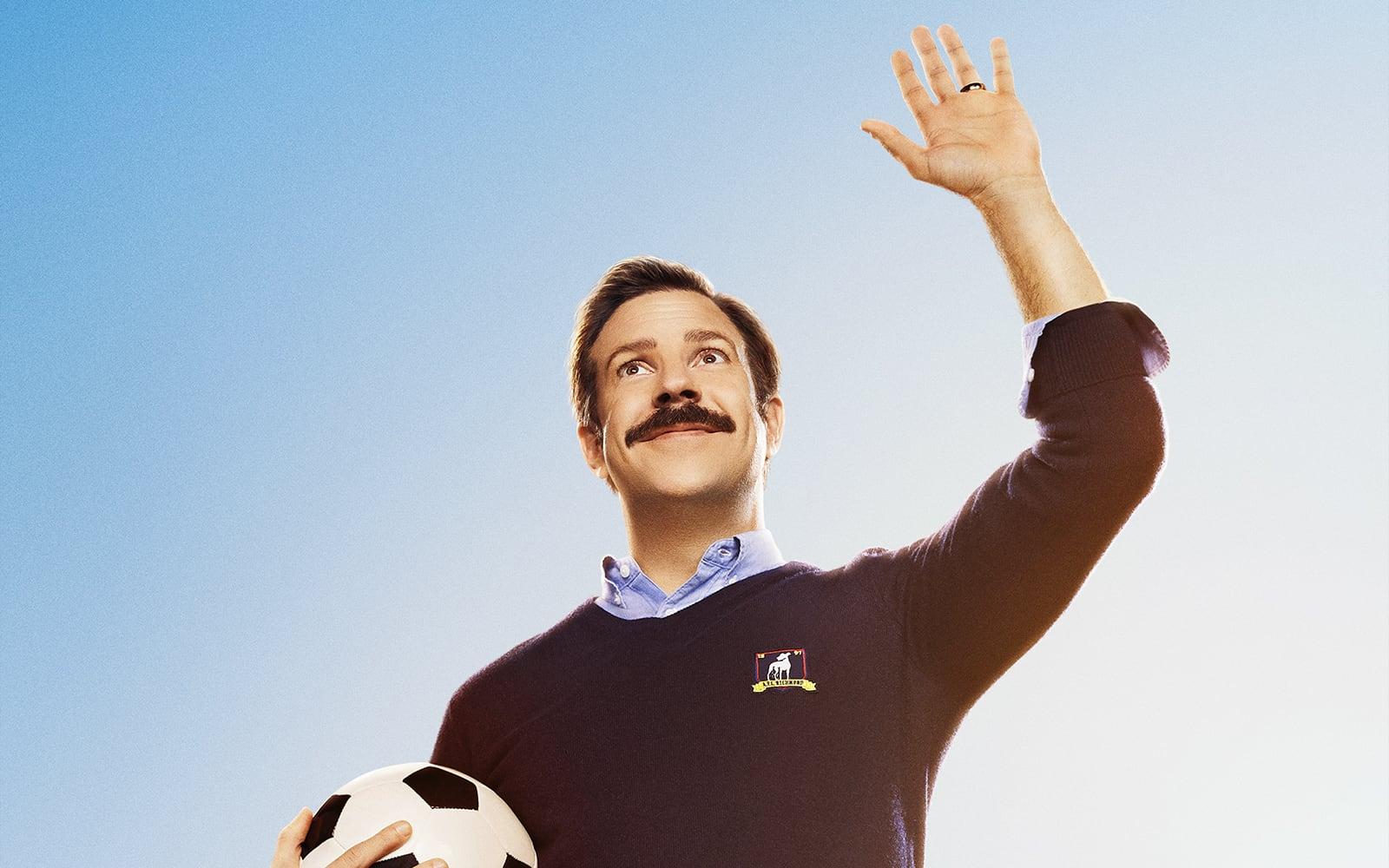
In order to better track my various cultural experiences (e.g., movies, TV shows, books, restaurants), I’ve created the Cultural Diet. Think of it as my own personal Goodreads, Letterboxd, and Yelp, all rolled into one (more info here). Every month, I recap everything that I watched, read, etc., in the previous month.

Ted Lasso’s final season was frustrating, to put it mildly. On the one hand, it had some truly delightful moments, the sort of big-hearted storytelling that made the first season so perfect. Rebecca’s memorable evening in Amsterdam. Jamie maturing into a fully-functioning adult. Richmond learning how to play Total Football. It’s a shame, then, that the season wasted so much time on storylines that were ultimately pointless, like the mercurial Zava or, worst of all, Jack and Keeley’s relationship. As a result, other, more deserving storylines — like Nate’s redemption or Rebecca finally moving past Rupert (played to slimy perfection by Anthony Head in the series’ most unflattering performance) — were left shallow and underdeveloped. I’m inclined to give season three an even lower score, but I’ll pull a Ted Lasso here because all misguided storytelling aside, I do believe Jason Sudeikis et al. had their hearts in the right place. Plus, they gave us Jamie’s pronunciation of “poopy,” which is worth at least half a star on its own. Overall, though, the season squandered too much of the series’ tremendous potential and good will.
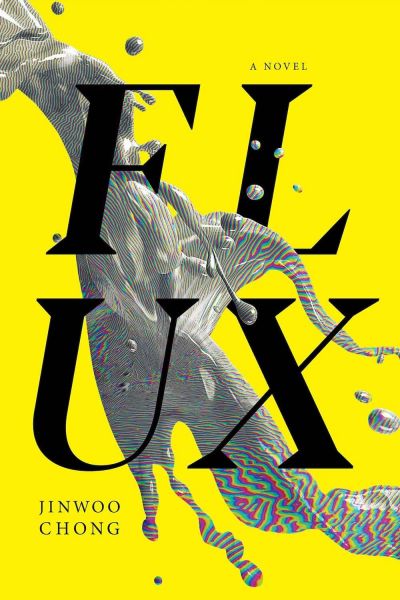
When is a time travel novel not a time travel novel? (Not in the usual sci-fi sense, anyway.) When it’s Jinwoo Chong’s Flux. Weaving three distinct narratives together with the framing device of a controversial ’80s detective show titled Raider, Flux explores Asian identity, queer relationships, corporate malfeasance (Flux was initially inspired by the fall of Theranos), family trauma, the ways in which pop culture shapes us, cancel culture, and yes, time travel. Suffice to say, Chong’s debut novel has a lot on its mind. And to be honest, I’m not sure how well it all fits together. Nevertheless, I couldn’t stop reading, thanks to Chong’s striking prose and literate spin on sci-fi tropes. That, and his descriptions of Raider are so vivid, I found myself Googling it to see if it was actually a real series that I’d somehow missed out on as a child of the ’80s. (It’s not, but I kind of wish it was now. I’d love to watch an episode or two.)
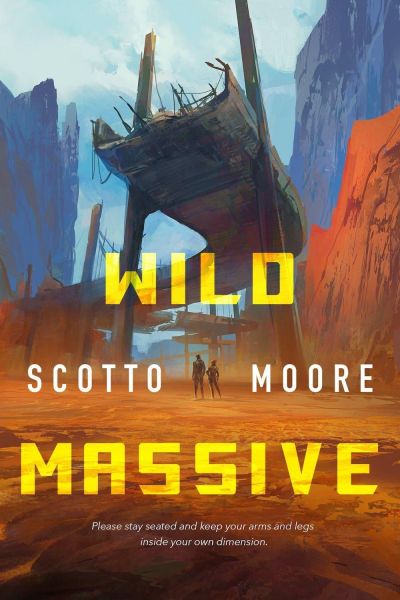
Scotto Moore’s Wild Massive was on my list of the most anticipated books of 2023 due in large part to its absolutely bonkers concept: an infinitely tall skyscraper exists at the center of the multiverse, and each floor is a self-contained world. People use teleporting elevators to travel between floors and spend their leisure time in gigantic theme parks that use a blend of magic and technology. Suffice to say, the bonker concept never solidified for me. Some readers might appreciate the book’s gonzo ride, during which Moore hurls one idea after another for you, but I just found overwhelming… and not in a good way. Did not finish.
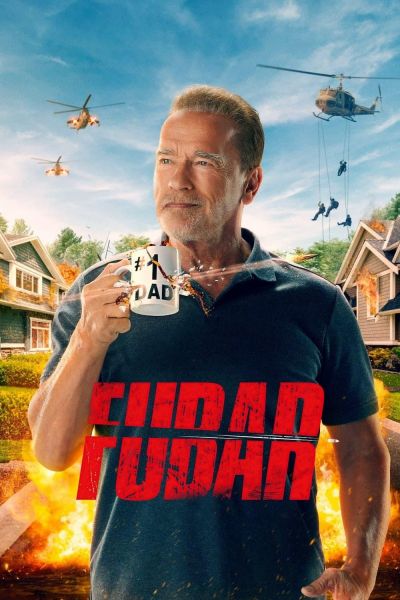
I was almost half-way through this Netflix series when I realized several things. First, I didn’t care one whit about these characters or what happened to them. Second, this “action comedy” had elicited, at most, four mild chuckles. Third, if I want to see Arnold Schwarzenegger star as a secret agent who has to juggle his secret life with his family life, then I should really just watch True Lies again. And fourth, I’m all for gun safety and believe that modern visual effects have removed the need to have real guns on a set. But for heaven’s sake, make sure sure that your gun-related visual effects (e.g., muzzle flashes, blood splatter) don’t look as cheap or rushed as they do in FUBAR. It actually made me feel bad for Schwarzenegger that, despite being one of the greatest action stars of all time, he starred in a series with such poorly executed action. Did not finish.
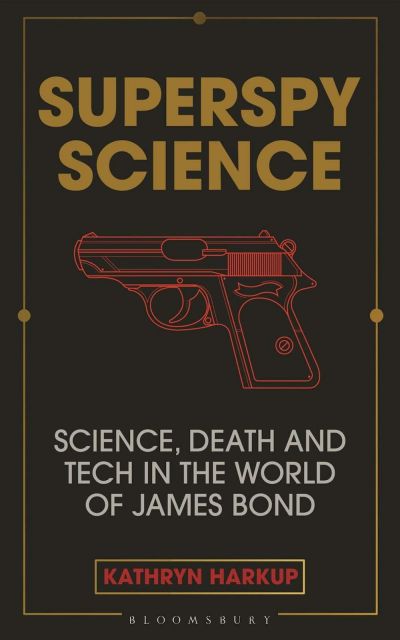
All Hollywood blockbusters require the suspension of disbelief, but with their death-defying stunts, cool gagdets, and outlandish settings, the James Bond movies require an extra high level suspension. Which is where Kathryn Harkup’s book comes into play, as she examines the science behind Rosa Klebb’s poison-tipped shoe, Goldfinger’s laser, and what it would take to have your very own volcanic lair à la Blofeld. (Spoiler alert: It’s probably more trouble than it’s worth.) It’s a thoroughly nerdy read, but much like Dave Addey’s Typeset in the Future, it’s the kind of nerdery that I can wholeheartedly endorse — especially when Harkup indulges in some cheeky commentary in her footnotes. Or put another way, if you ever enjoyed MythBusters’ various James Bond specials, then you’ll probably enjoy this.
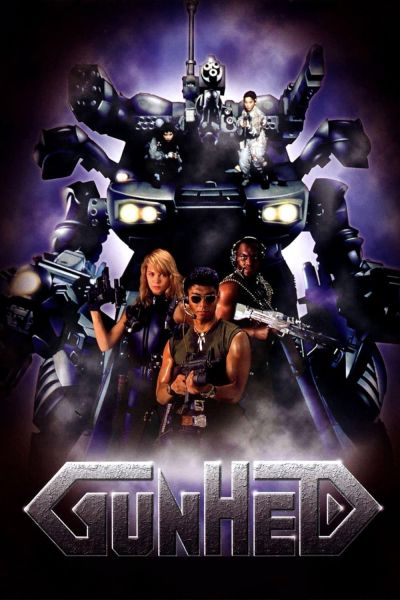
As you might’ve guessed by now, I’m a bit of a sucker for cheesy Japanese sci-fi movies from the late ’80s and early ’90s (e.g., Mechanical Violator Hakaider, Zeiram). Gunhed is one such movie that I’ve been wanting to see for almost thirty years now, ever since I stumbled across the manga back in high school. (It’s funny how such things can remain lodged in your subconscious for decades.) Of course, I wasn’t expecting it to be good when I finally did see it. I mainly wanted to see Gunhed for its visual effects, model work, and cyberpunk designs — which are pretty dated but also possess a certain charm when compared to today’s CGI fests. But Gunhed also possesses an overly convoluted plot about bandits trying to scavenge technology on a forbidden industrial island that cribs an awful lot from James Cameron. What’s more, the editing is often to the point of incoherence (which sadly, obscures the giant mecha combat that’s a main selling point for a film like this) and it has an annoying kid character (one of my biggest movie pet peeves).
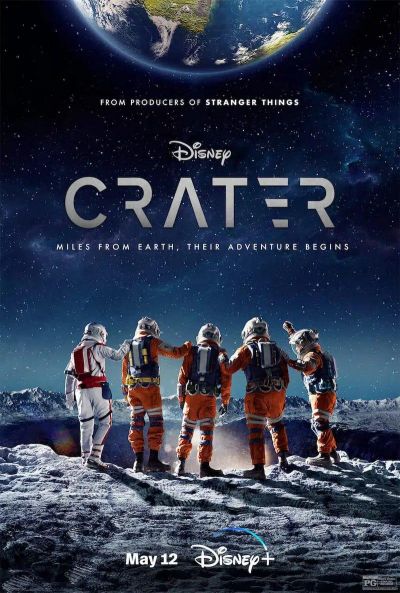
My family watched this Disney+ original film on a whim and suffice to say, I was very pleasantly surprised. On its surface, Crater is a sci-fi coming-of-age story about a group of precocious teens who go on one last hurrah — a lunar roadtrip to visit a distant crater — before one of their number is sent off to another planet. And if that’s all that Crater was, it’d be fine enough… probably. But mix in some resonant themes about grief and family trauma; some subtext about greed and worker exploitation; an appropriately bittersweet ending; and finally, uniformly strong performances from its young cast. Suddenly, Crater becomes something quite a bit more than it might seem at first glance. You’ll have to overlook some flawed science (e.g., the variable gravity levels) and some clunky editing, but if you can do that, you might just be as pleasantly surprised as I was.
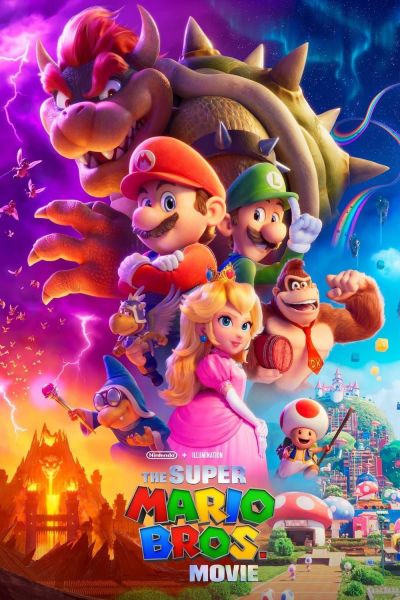
This was a real “meh” movie for me. Some of the CGI visuals were impressive and the voice acting was enjoyable enough. (Nobody else but Jack Black could be Bowser, and after seeing the hate that Chris Pratt received, I though his Mario was fine.) But overall, The Super Mario Bros. Movie left me feeling, well, meh. I caught many of the references — e.g., the callbacks to Koji Kondo’s classic soundtrack, Jumpman, Diddy Kong — but that’s really all it was, a series of references. There was nothing bad about the movie, per se, but it felt very safe and by-the-numbers, as if its only concern was checking everything on the “Fans Will Be Pissed Off If They Don’t See This” checklist, and nothing else. (Compare that to the first Sonic the Hedgehog movie, which possessed an irreverent zaniness that made it better than it honestly had any right to be.)
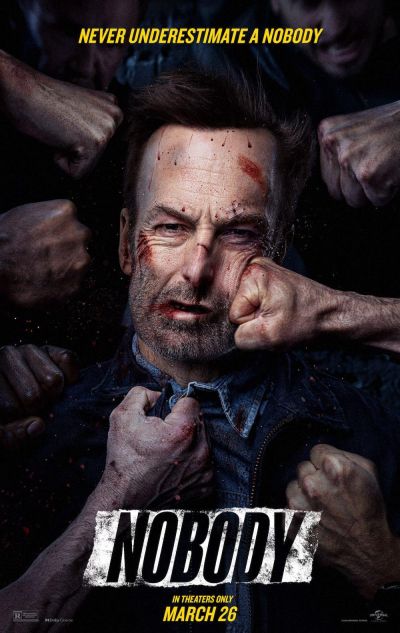
Sure, Nobody is filled with over-the-top action sequences, including a long, violent standoff in a machine shop, and a dark sense of humor. But we’ve seen all that before. Nobody really only succeeds because of one thing: Bob Odenkirk’s performance. Odenkirk is perfect as a sadsack middle-aged suburbanite named Hutch who clearly has some repressed issues. But Nobody wisely takes its time, settling us into the doldrums and dreary rhythms of Hutch’s life, be it forgetting to take out the garbage every week or his family’s constant looks of disappointment. Thus, when the truth is inevitably revealed — that Hutch used to be an elite government assassin who gave it all up for the domestic life, and now must “reawaken” those deadly skills to defend his family from Russian gangsters — it’s as much a catharsis for the audience as it is for Hutch. I certainly didn’t have Bob Odenkirk on my “action star” bingo card, but that incongruity only makes the film more fun and interesting, especially in the first big fight scene where Hutch takes on a bunch of punks on a bus. A sequel’s been announced, but I’m not sure how enjoyable it will be given that we now know Hutch’s big secret.
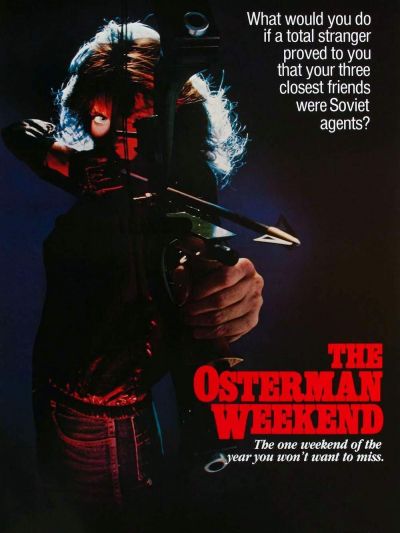
I went into this film anticipating a paranoid thriller along the same lines as The Parallax View or Three Days of the Condor. What I got was a muddled mess made all the more disappointing by the fact that it was directed by Sam Peckinpah (his final film, in fact), stars Rutger Hauer and John Hurt, and has a Lalo Schifrin score. The Osterman Weekend works really hard to make you think that it’s smarter than it actually is, but its tangle of storylines (which include Russian secret agents, government corruption, and fears about surveillance and media manipulation) combined with jumbled editing and unlikable characters will just leave you scratching your head the entire time. A director’s cut was released in 2022 — the 1983 theatrical release was edited by the producers themselves after they fired Peckinpah — but the film is so random and slapdash that I have a hard believing that a director’s cut would be any more enjoyable or insightful.
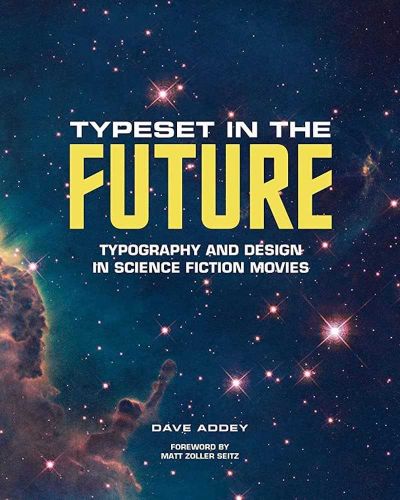
To call Typeset in the Future “in-depth” is a gross understatement. Dave Addey’s book dives headfirst into that liminal space between typography and sci-fi, and specifically, how typography has often been used to help create futuristic fictional worlds. Addey reviews several classic sci-fi movies (e.g., 2001: A Space Odyssey, Star Trek: The Motion Picture, Blade Runner) to see how they used typefaces to lend their individual visions of the future detail and legitimacy. Along the way, he delves into the history of “futuristic” typefaces like the ominipresent Eurostile Bold Extended, discusses graphic design and sci-fi with legends like Mike Okuda (who designed many of the computer displays and user interfaces seen in Star Trek), and offers up all manner of behind-the-scenes trivia for the movies in question. (For example, did you know that some of the on-screen text that appears in Blade Runner was actually lifted from a Matrix Instruments ad that ran in the January 1980 issue of Datamation magazine?) In other words, Typeset in the Future is the sort of high-level super-niche ultra-nerdery that can only result from a fascination that borders on obsession, and it’s all the more enjoyable for it.
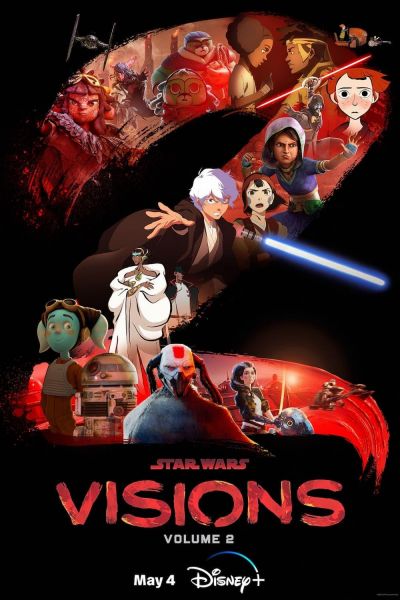
I liked the first volume of Star Wars: Visions — an anthology of shorts by the world’s best animation studios that plays fast and loose with Star Wars canon — well enough. But I enjoyed Volume Two quite a bit more. Not surprisingly, “I Am Your Mother” by the legendary Aardman studio (Wallace and Gromit, Shaun the Sheep) was enjoyable. But my favorites shorts were Studio Mir’s “Journey to the Dark Head” and Triggerfish’s “Aau’s Song.” The former is packed with stunning action and visuals, as you’d expect from the studio behind Voltron: Legendary Defender and The Legend of Korra. As for the latter, I was utterly entranced by its artistic style, which looks like stuffed animals come to life in a vividly realized CGI world. Interestingly, several of the shorts feature young children leaving their loved ones to begin their Jedi training. This is often handled in a melancholy manner that (1) reminded me of Obi-Wan’s reminiscing about his family in his live-action action series and (2) raises some questions about the morality of the Jedi Order.
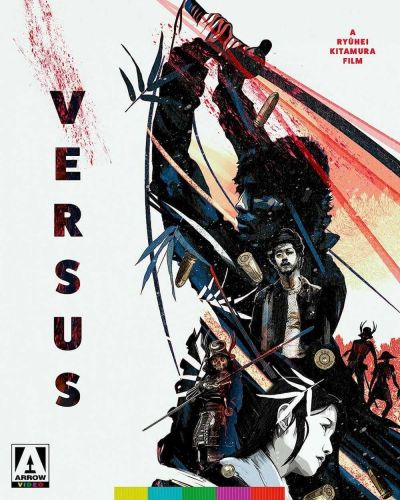
I loved Versus when I first saw it back in the early ’00s — its zombie/martial arts/gangster storyline had “cult hit” written all over it — but it’d been at least 15 years since my last viewing. Watching it now, the film’s flaws are more apparent. Specifically, Ryûhei Kitamura’s debut feature is about 30 minutes too long, what with all of the whip pans, dolly zooms, slow-motion, and shaky cam. And parts that I once found hilarious are not quite so much anymore. Still, its blend of Sam Raimi-influenced camerawork, Matrix-esque action, zombie gore, and yakuza flair is entertaining and even inspiring at times. Versus was reportedly shot for $10,000, which makes what you actually see all the more impressive. Kitamura and his cast and crew fully embraced their limitations, which forced them to get clever with, well, everything you see, from the practical effects and martial arts choreography to the film’s depiction of the supernatural through clever cinematography. In other words, Versus is proof that when it comes to making memorable films, imagination and creativity can trump a big budget.
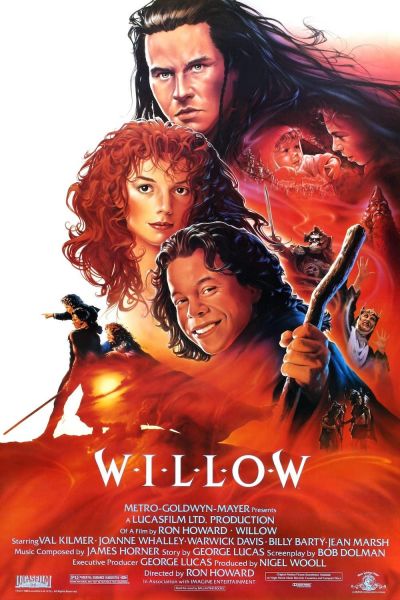
Had I seen Willow when I was twelve, I’m sure it would’ve become one of my favorite films right alongside Flight of the Navigator. Unlike my wife, however, I wasn’t allowed to see Willow as a child, so I have zero nostalgic attachments to this classic ’80s fantasy film from Ron Howard and George Lucas. (By contrast, I have all the nostalgic attachments for Flight of the Navigator.) Which was not to Willow’s advantage. It’s not without its charms — e.g., Warwick Davis’ earnest performance, the Welsh and New Zealand scenery, some of the vintage effects (it was refreshing to see a CGI-less fantasy film) — but overall, Willow is a slog without nostalgia’s rose-colored glasses. Val Kilmer’s clownish-yet-dashing swordsman is far more clownish than dashing (which makes both his battle prowess and his eventual romance with the villain’s warrior daughter all the more eyeroll-inducing) and the less said about Kevin Pollak and Rick Overton’s annoying brownie duo, the better. On a sidenote, I had little interest in watching Disney+‘s Willow series, and now I have zero interest.

I’m honestly bummed I didn’t like this more than I actually did. I loved the trailers, which felt like they got the tone of D&D just right, i.e., that it’s at its best when it’s crazy, chaotic, and just plain madcap fun. As such, I think I was hoping for more hijinks. The film works best when it’s at its goofiest, whether it’s our heroes attempting a harebrained magic-enhanced heist, screwing up the “Speak with Dead” spell, or stupidly setting off a trap. (And unfortunately, many of those moments are in the film’s trailers). The movie’s not so good when it aims for an epic fantasy adventure vibe à la the Lord of the Rings movies replete with sweeping landscape shots and the requisite soaring soundtrack. For what it’s worth, my 13-year-old absolutely loved it, and said it’s one of his top ten favorite movies of all time, so I suspect we’ll be watching it again — and the film is so earnestly good-natured that I’m willing to give it another shot.